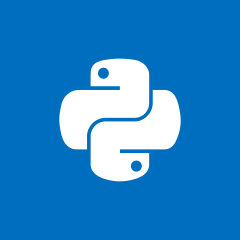如何在 pygame 平台游戏中重写碰撞逻辑?
我似乎不知道如何为我的平台游戏编写碰撞逻辑。
项目文件:https ://github.com/1NilusNilus/Pygame-Platformer
玩家移动代码:
def move(self):
print(self.POS)
if self.POS[1] > SCREEN_SIZE[1]:
self.POS[1] = SCREEN_SIZE[1] - self.SIZE[1]
self.RECT.x = self.POS[0]
self.RECT.y = self.POS[1]
self.VEL[0] = 0
if self.DIR["left"]:
self.VEL[0] = -5
if self.DIR["right"]:
self.VEL[0] = 5
self.POS[0] += self.VEL[0]
self.VEL[1] += self.GRAVITY
瓷砖碰撞测试代码:
def testCollision(self, rect):
self.RECT.x = self.POS[0]
self.RECT.y = self.POS[1]
for tile in self.TILES:
if rect.colliderect(tile):
self.hitlist.append(self.RECT)
return self.hitlist
 侃侃无极
侃侃无极浏览 209回答 1
1回答
-

狐的传说
您没有描述您希望碰撞如何进行。所以我会一边做一边弥补。进行碰撞的最简单方法之一是在尝试移动期间进行测试。也就是说,在更改玩家的坐标之前确定提议的移动是否合法。这很有效,因为代码知道玩家的原始位置和行进方向。因此,一个优雅的解决方案将玩家部分地移动到所需的方向直到碰撞点。所以对于初学者来说,你似乎保留了一个玩家POS和一个玩家RECT。为什么要保留两个位置?让我们只使用RECT. 但请记住 Python 风格指南PEP8,我们将其称为rect.查看您现有的功能,将move()玩家左右移动,增加重力,并处理屏幕上的情况。恕我直言,玩家移动功能不应该知道重力,因此应该在其他地方处理。它可以简单地作为 y-change 的一部分传递。我将把屏幕测试留给读者作为练习。关于碰撞 - 我对你的地图一无所知,但一次移动可能会与超过 1 个物体发生碰撞。想象一下dx像素的单跳,用例:我们知道这个提议的单跳向右会与 3 个物体发生碰撞。在这个移动实现中,我们只能移动到接触最左侧地形元素“T2”的左侧。你能看出知道拟议的运动是“正确的”对这有什么帮助吗?它允许我们说:“向右移动dx像素,我们会碰到 3 个东西。所以停在最左边的那个”。如果你的玩家已经移动,然后你的碰撞报告显示:“呃-哦,3 次碰撞,老大”,你该如何修复它?你不能。所以我们采取理论上的移动方式,如果没有碰撞,那么玩家就可以移动所有的物体。但如果发生碰撞,我们会查看行进方向,并找到距离我们最近的碰撞点。这成为该方向的移动限制。但我们可以像独立运动一样简单地处理dx和dy 。参考代码:import pygameimport randomWINDOW_WIDTH = 500WINDOW_HEIGHT = 500WHITE = ( 200, 200, 200 )GREEN = ( 30, 240, 80 )BLUE = ( 3, 5, 54 )class DummyMap: """ A random map of blockable terrain objects. Being random, it sometimes unhelpfully puts blocks over the initial player position. """ def __init__( self, point_count, x_size=32, y_size=32 ): self.blockers = [] for i in range( point_count ): random_x = random.randint( 0, WINDOW_WIDTH ) random_y = random.randint( 0, WINDOW_HEIGHT ) self.blockers.append( pygame.Rect( random_x, random_y, x_size, y_size ) ) def draw( self, surface ): for tile in self.blockers: pygame.draw.rect( surface, GREEN, tile ) def testCollision( self, rect ): """ This function is very much NOT efficeient for large lists. Consider using a quad-tree, etc. for faster collisions """ colliders = [] for tile in self.blockers: if ( tile.colliderect( rect ) ): colliders.append( tile ) return collidersclass Player: """ Simple moveable player block, which collides with map elements """ def __init__( self, x, y ): self.image = pygame.Surface( ( 32, 32 ) ) self.rect = self.image.get_rect() self.rect.x = x self.rect.y = y self.image.fill( WHITE ) def draw( self, surface ): surface.blit( self.image, self.rect ) def move( self, dx, dy, game_map ): """ Move the player, handling collisions """ # calculate the target position of any x-move if ( dx != 0 ): move_rect = player.rect.copy() move_rect.move_ip( dx, 0 ) print( "DEBUG: proposed x-move to (%d, %d)" % ( move_rect.x, move_rect.y ) ) # Does this new position collide with the map elements? collide_rects = game_map.testCollision( move_rect ) if ( len( collide_rects ) > 0 ): # yes collided, determine which object is the nearest if ( dx > 0 ): # Going right, get the left-most x out of everything we hit lowest_left_side = min( [ r.left for r in collide_rects ] ) # We can only move right as far as this lowest left-side, minus our width final_dx = lowest_left_side - self.rect.right else: # Going left, get the right-most x out of everything we hit highest_right_side = max( [ r.right for r in collide_rects ] ) # We can only move left as far as the highest right-side final_dx = highest_right_side - self.rect.left # (this is a negative value) else: final_dx = dx # no collsiions, no worries # Do the x-movement self.rect.x += final_dx print( "DEBUG: final x-move to (%d, %d)" % ( self.rect.x, self.rect.y ) ) if ( dy != 0 ): move_rect = player.rect.copy() move_rect.move_ip( 0, dy ) print( "DEBUG: proposed y-move to (%d, %d)" % ( move_rect.x, move_rect.y ) ) # Does this new position collide with the map elements? collide_rects = game_map.testCollision( move_rect ) if ( len( collide_rects ) > 0 ): # yes collided, determine which object is the nearest if ( dy < 0 ): # Going up, get the bottom-most y out of everything we hit lowest_bottom_side = min( [ r.bottom for r in collide_rects ] ) # We can only move up as far as this lowest bottom final_dy = lowest_bottom_side - self.rect.top else: # Going down, get the top-most y out of everything we hit highest_top_side = max( [ r.top for r in collide_rects ] ) # We can only move down as far as the highest top-side, minus our height final_dy = highest_top_side - self.rect.bottom # (this is a negative value) else: final_dy = dy # no collsiions, no worries # Do the y-movement self.rect.y += final_dy print( "DEBUG: final x-move to (%d, %d)" % ( self.rect.x, self.rect.y ) ) ### initialisationpygame.init()window = pygame.display.set_mode( ( WINDOW_WIDTH, WINDOW_HEIGHT ) )pygame.display.set_caption("Collision Demo")# Game elementsplayer = Player( WINDOW_WIDTH//2, WINDOW_HEIGHT//2 )game_map = DummyMap( 37 )### Main Loopclock = pygame.time.Clock()done = Falsewhile not done: # Handle user-input for event in pygame.event.get(): if ( event.type == pygame.QUIT ): done = True # Movement keys keys = pygame.key.get_pressed() dx = 0 dy = 0 # 2 # gravity sucks if ( keys[pygame.K_UP] ): dy -= 5 if ( keys[pygame.K_DOWN] ): dy += 5 if ( keys[pygame.K_LEFT] ): dx -= 5 if ( keys[pygame.K_RIGHT] ): dx += 5 # Try to move the player according to the human's wishes player.move( dx, dy, game_map ) # Update the window, but not more than 60fps window.fill( BLUE ) game_map.draw( window ) player.draw( window ) pygame.display.flip() # Clamp FPS clock.tick_busy_loop(60)pygame.quit()
 随时随地看视频慕课网APP
随时随地看视频慕课网APP
相关分类

 Python
Python